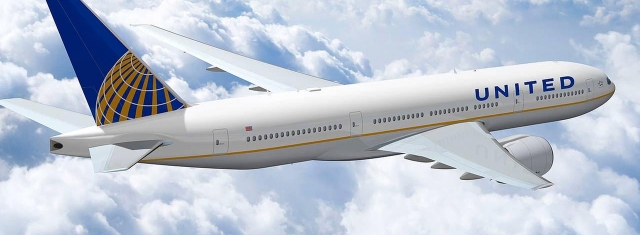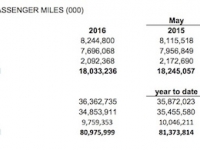Travel
United Airlines reported May 2016 operational results.
Traffic 1.2 percent decreased

B 777 United (Source: Photo by United media gallery)
USPA NEWS -
UAL's May 2016 consolidated traffic (revenue passenger miles) decreased 1.2 percent and consolidated capacity (available seat miles) increased 0.5 percent versus May 2015. UAL's May 2016 consolidated load factor decreased 1.4 points compared to May 2015.
UAL's May 2016 consolidated traffic (revenue passenger miles) decreased 1.2 percent and consolidated capacity (available seat miles) increased 0.5 percent versus May 2015. UAL's May 2016 consolidated load factor decreased 1.4 points compared to May 2015.
The company continues to expect second-quarter 2016 consolidated passenger unit revenue to decline 6.5 to 8.5 percent compared to the second quarter of 2015. The year-over-year performance is primarily impacted by a strong U.S. dollar, lower surcharges, travel reductions from customers impacted by declining oil prices, competitive actions and passenger demand not growing at the same pace as industry capacity.
The company continues to expect second-quarter 2016 consolidated passenger unit revenue to decline 6.5 to 8.5 percent compared to the second quarter of 2015. The year-over-year performance is primarily impacted by a strong U.S. dollar, lower surcharges, travel reductions from customers impacted by declining oil prices, competitive actions and passenger demand not growing at the same pace as industry capacity.
United and United Express operated more than 1.5 million flights carrying more than 140 million customers. United is proud to have the world's most comprehensive route network, including U.S. mainland hubs in Chicago,Denver, Houston, Los Angeles, New York/Newark, San Francisco and Washington, D.C. United operates more than 715 mainline aircraft, and this year, the airline anticipates taking delivery of 21 new Boeing aircraft, including 737 NGs, 787s and 777s.
The airline is a founding member of Star Alliance, which provides service to 192 countries via 28 member airlines. Approximately 86,000 United employees reside in every U.S. state and in countries around the world. For more information, visit united.com, follow @United on Twitter or connect on Facebook. The common stock of United's parent, United Continental Holdings, Inc., is traded on the NYSE under the symbol UAL
Liability for this article lies with the author, who also holds the copyright. Editorial content from USPA may be quoted on other websites as long as the quote comprises no more than 5% of the entire text, is marked as such and the source is named (via hyperlink).






